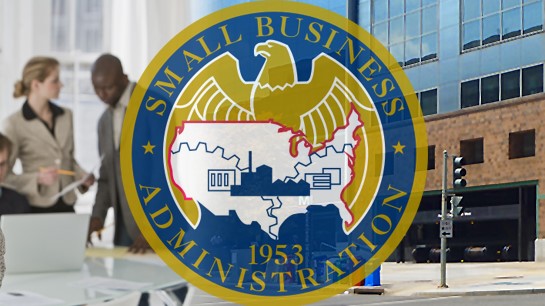On May 15, 2020, the Small Business Administration (SBA) released its PPP loan forgiveness application and instructions providing guidance to PPP loan borrowers. The welcome instructions come more than six weeks after PPP loan applications were first accepted.
The guidance strays from the original legislation (the CARES Act) in some parts and clarifies some of the gray areas created by the CARES Act and interim guidance from the SBA. The SBA has also announced it will soon issue regulations and additional guidance to assist borrowers with completing their applications.
The CARES Act established the PPP, or Paycheck Protection Program, in response to the COVID-19 pandemic as a government program to provide forgivable loans to small businesses. Businesses were to use a majority of the PPP loan funds to maintain their payroll for at least eight weeks after receiving the loan. The PPP Loan Forgiveness Application, described below, details the amount of forgiveness available to PPP loan recipients.
Overview of the PPP Loan Forgiveness Application
The PPP Loan Forgiveness Calculation Form
Borrowers will use the PPP Loan Forgiveness Calculation Form to calculate the amount of loan forgiveness they are eligible for. To begin the calculation, borrowers will need to enter the costs incurred or paid for during the covered period (described in more detail below). These costs can include payroll costs, mortgage interest payments, rent or lease payments, and utility payments. If a borrower did not fully maintain its payroll during the covered period, or if payroll costs were less than 75% of its total costs, the calculations described below will reduce the amount of forgiveness the borrower is eligible for.
The PPP Schedule A
Borrowers will use the PPP Schedule A to calculate adjustments to the costs they incurred or paid for during the covered period. Since the purpose of the PPP is to encourage employers to maintain their payroll, a borrower will adjust its forgivable amount if it reduced its payroll.
To determine what payroll costs are eligible for forgiveness, borrowers must first itemize compensation paid to employees, employer contributions for health insurance and retirement plans, and employer portions of state and local taxes. Then, the borrower must determine if it will need to make adjustments to the forgivable amount. If the borrower reduced its number of employees during the covered period, then the applicant will need to calculate its full-time equivalency (FTE) reduction amount. If the applicant reduced the average paid hours of its employees during the covered period, then it will need to calculate its salary/hourly wage reduction amount. These two calculations will be entered on the PPP Loan Forgiveness Calculation Form and will reduce the amount of forgiveness the borrower is eligible for.
The PPP Schedule A Worksheet
Borrowers will use the PPP Schedule A Worksheet to calculate compensation paid to employees, the FTE amount (if there is a reduction in full-time employees), and the salary/hourly wage reduction amount (if they reduced any employees’ salaries or hourly wages by more than 25%). Borrowers will input these calculations on the PPP Schedule A. The borrowers will use these calculations to determine the total amount of forgiveness they are eligible for. Borrowers do not need to submit the Worksheet with the application.
Attachments
In addition to the PPP Loan Forgiveness Calculation Form and the PPP Schedule A, the borrower must submit the following documents with its application for forgiveness:
- Payroll documentation verifying payroll costs, including bank statements, tax forms, and payment receipts or cancelled checks;
- Documentation showing the number of employees on payroll from February 15, 2019 through June 30, 2019 and from January 1, 2020 through February 29, 2020 (different periods are acceptable for seasonal employers); and
- Documentation verifying non-payroll expenses, including business mortgage interest payments, rent or lease payments, and utility payments.
Additional Records
Borrowers must also maintain, but not submit, the following additional records for six years after the date the loan is forgiven or repaid in full:
- The PPP Schedule A Worksheet, or an equivalent form, and the documentation supporting the calculations; and
- All records relating to the PPP loan, including the documentation submitted with the application and documentation supporting the necessity certification.
Additional Guidance on PPP Loan Forgiveness
The instructions to the PPP Loan Forgiveness Application stray from the CARES Act in one important respect. The CARES Act defined the covered period as the eight-week period starting from the date the borrower received PPP loan funds. The instructions allow for an alternative covered period for administrative convenience. If a borrower is on a biweekly, or more frequent, payroll schedule, it can elect to begin its covered period on the first day of the first pay period following receipt of the PPP loan.
The instructions also clarify the following confusing areas:
- Calculated expenses include accrued expenses that have not yet been paid;
- The rule that 75% must be spent on payroll costs is clarified to apply to 75% of the requested forgiveness amount, not 75% of the total loan amount (which means that if more than 25% of the loan proceeds were spent on non-payroll costs, the applicant is not disqualified from forgiveness, but the amount of forgiveness is reduced);
- Full-time is defined as 40 hours or more; and
- The calculation procedure for determining a borrower’s forgiveness amount (guided by the PPP Schedule A Worksheet) is now clearer.
What remains unclear is how the guidance will apply to each borrower’s particular circumstances. To protect the maximum amount of forgiveness your organization is eligible for, it is important to maintain proper records during its covered period. If you have any concerns about what your organization needs in order to apply for forgiveness, please contact The Law Firm For Nonprofits.
